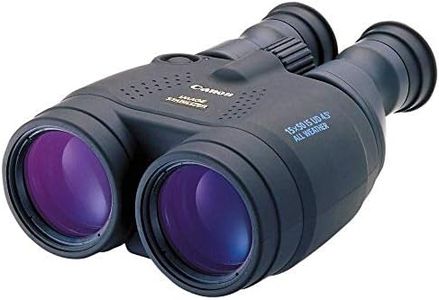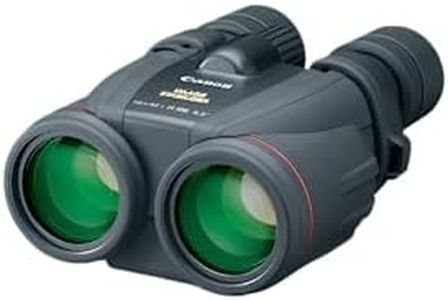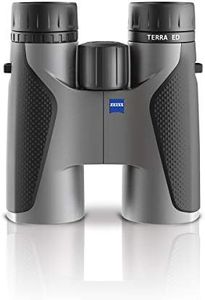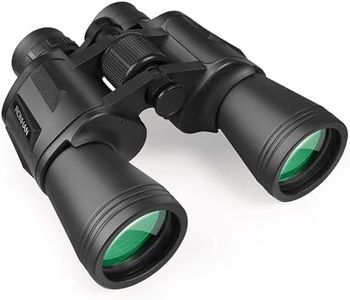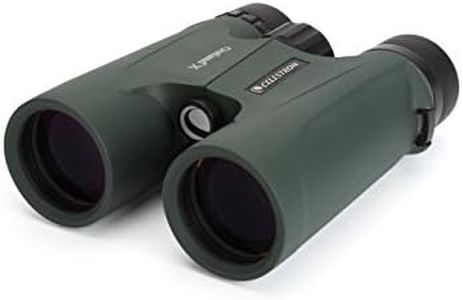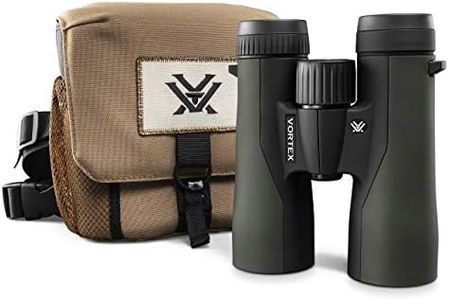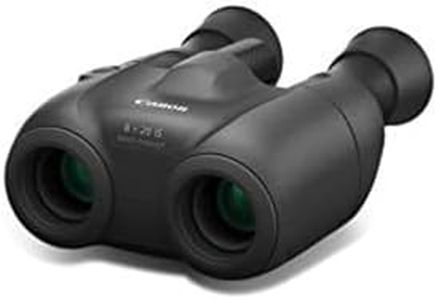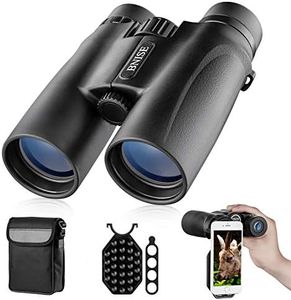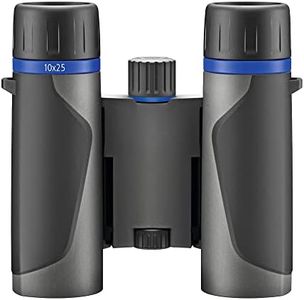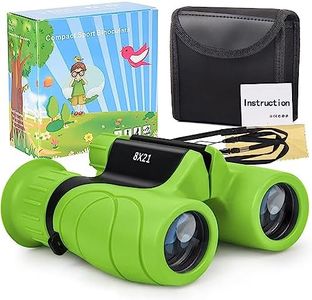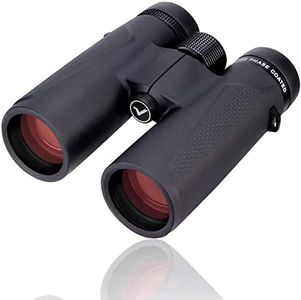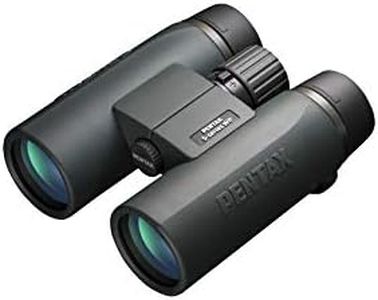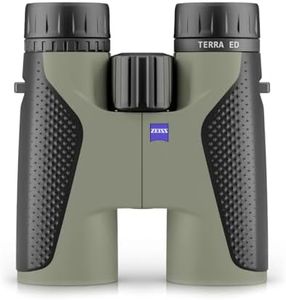We Use CookiesWe use cookies to enhance the security, performance,
functionality and for analytical and promotional activities. By continuing to browse this site you
are agreeing to our privacy policy
10 Best Inexpensive Binoculars
From leading brands and best sellers available on the web.Buying Guide for the Best Inexpensive Binoculars
When shopping for inexpensive binoculars, the goal is to find a balance between good image quality, useful features, and comfortable use without breaking the bank. There are many options out there, so focusing on your main uses—like bird watching, sports events, hiking, or travel—will really help guide you. Knowing the basics about how binoculars work and what different numbers and terms mean will make it much easier to choose a pair you’ll be happy with.MagnificationMagnification tells you how many times closer an object will appear compared to the naked eye. This is the first number you see in specifications (like 8x42 means 8x magnification). Lower magnification, like 7x or 8x, gives you a wider field of view and less image shake, making it good for steady viewing and tracking moving subjects. Higher magnifications, like 10x, bring you closer but can make it harder to keep the image steady and narrower in scope. If you'll be using binoculars while moving or for general purposes, 7x or 8x is usually best. For distant observation from a steady position, a higher magnification may fit your needs.
Objective Lens DiameterThis is the second number in the binoculars’ description (again, 8x42 means 42mm objective lenses). The lens diameter affects how much light enters the binoculars—bigger means brighter images, especially in low light like dawn or dusk. Smaller diameters are more compact and lighter but may not be as bright. If you’ll mainly use binoculars during daytime, a diameter of 25-32mm is perfectly fine. If you want brighter views at dusk or dawn, look for at least 40mm.
Field of ViewField of view means how wide an area you can see through your binoculars at a certain distance. A wider field is helpful for watching fast-moving things or scanning large areas. Field of view is often shown in feet at 1000 yards or meters at 1000 meters. If you’re following sports, wildlife, or birds, a wide field is helpful—look for higher numbers here. If you are mostly viewing stationary objects, this is less critical.
Size and WeightSize and weight make a big difference in how convenient your binoculars are to use and carry. Smaller, lighter binoculars are easier to pack and hold for long periods, ideal for travel, hiking, or children. Larger models can be heavier but may give a brighter or steadier view. Consider how and where you’ll carry them—if pocketability and carrying all day matter, pick a compact size.
Prism TypeBinoculars use prisms inside to flip and orient the image. The two main types are roof prisms and Porro prisms. Roof prism binoculars are straight-barreled and often more compact but can be pricier to make well. Porro prism types are bulkier and have a zigzag shape but often give better image quality at lower prices. For inexpensive binoculars, Porro prisms often give the best bang for buck.
Water ResistanceSome binoculars are labeled as water-resistant or waterproof, which means they can handle rain or damp conditions. This spec is important if you plan to use your binoculars outdoors often, especially while hiking, boating, or birding. If you’ll use them mostly indoors or in fair weather, it might not matter as much. However, even basic water resistance is a plus for peace of mind.
Eye ReliefEye relief is the distance your eyes need to be from the eyepiece to see the full image. Long eye relief (usually 15mm or more) is especially important if you wear glasses, as it lets you see clearly without removing them. If you don’t wear glasses, this is less critical, but comfortable eye relief is still a sign of user-friendly design.
